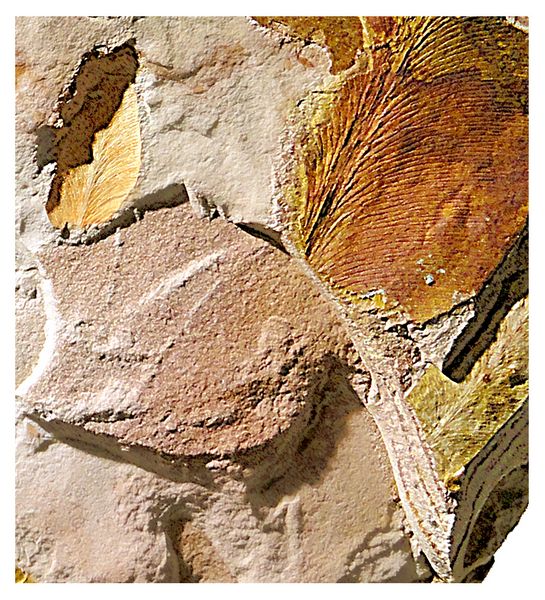Athena Review Image Archive ™
Glossopteris leaves and stem fossils

Glossopteris leaves and stem fossils
Glossopteris was a dominant tree in the southern megacontinent known as Gondwanaland during the Permian period (298-252 mya). It became extinct during the mass extinction at the Permian-Triassic boundary (ca. 252-250 mya).
The plant was originally classified by Brongniart (1828) as a fern, and is now considered a seed fern. The name glossopteris derives from glosso- "tongue" and -pteris "fern" or "feather (Gk)." Recent phylogenetic analyses place glossopterids as related to a large group including Corystospermales, Caytoniales, Bennettitales, Pentoxylales, Gnetales (in some analyses), and angiosperms.
Glossopteris grew as bushes
and trees up to 30 m tall. Its large, fern-like leaves were between 2 - 30 cm
long. Fossils of Glossopteris
have been found in Brazil,
Australia, Africa, Madagascar, India (with 70 taxa known), and
Antarctica, across Gondwanaland.
References:
Brongniart,A.1828-38: Histoire des végétaux fossiles on reserches botaniques et géologiques sur les végétaux renfermés dans les diverses couches du globe. G. Dufour & Ed. D`Ocagne; Paris
Copyright © 1996-2020 Rust Family Foundation (All Rights Reserved).